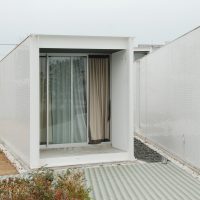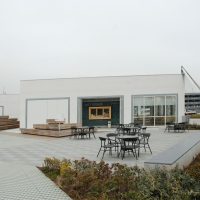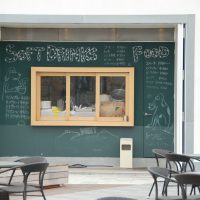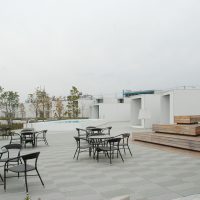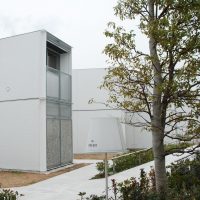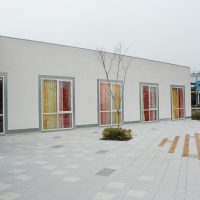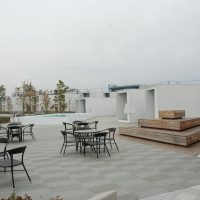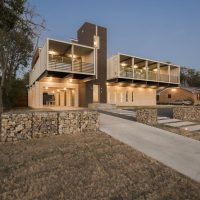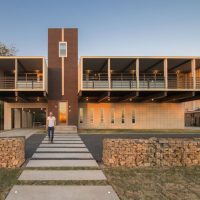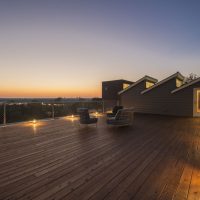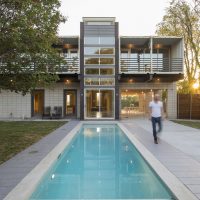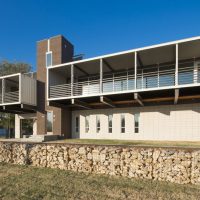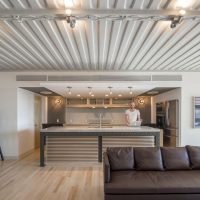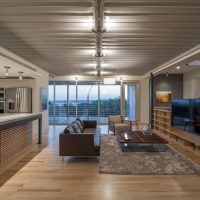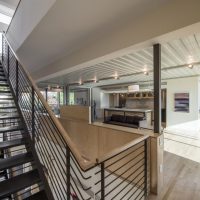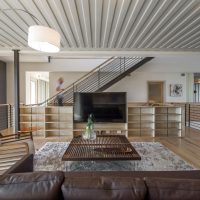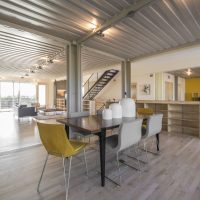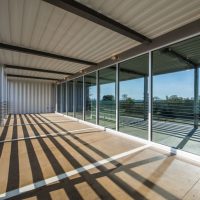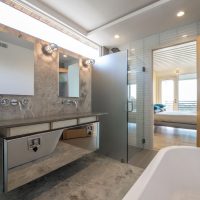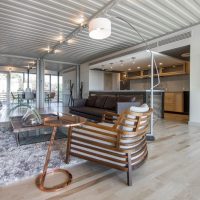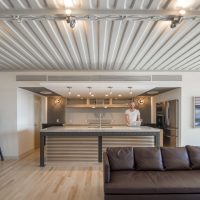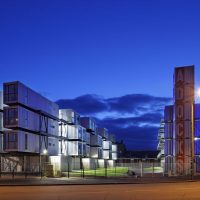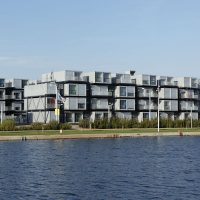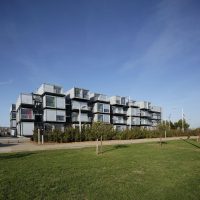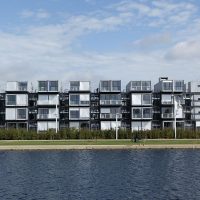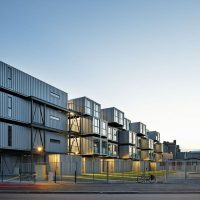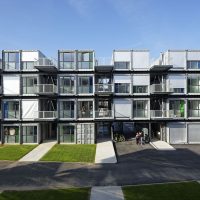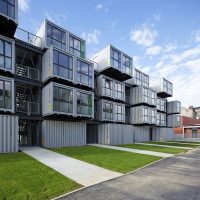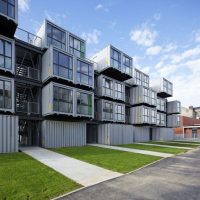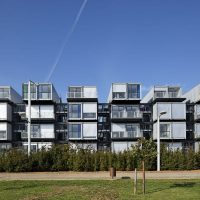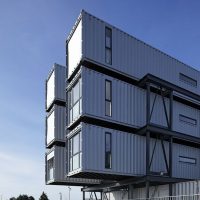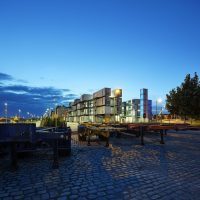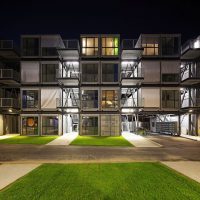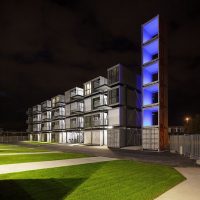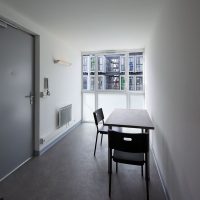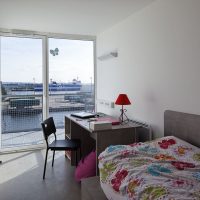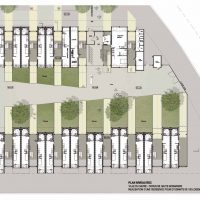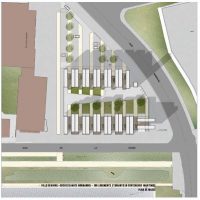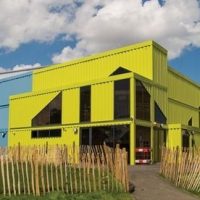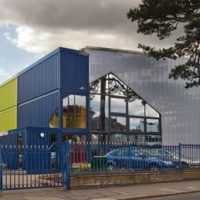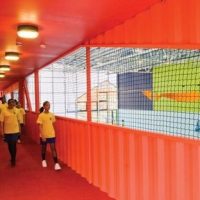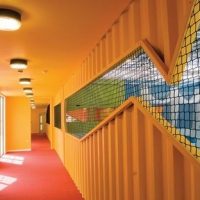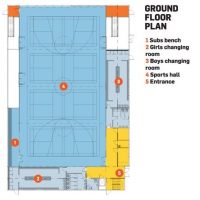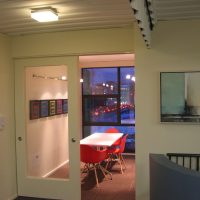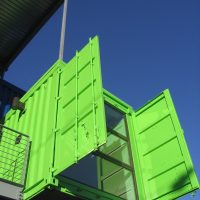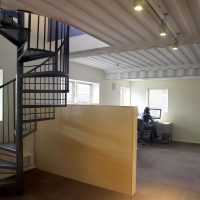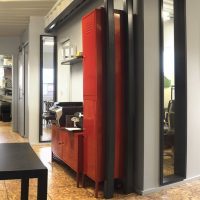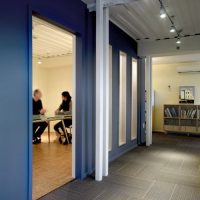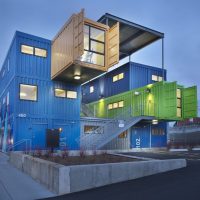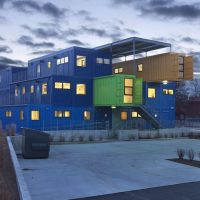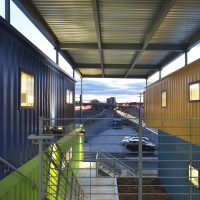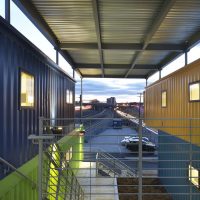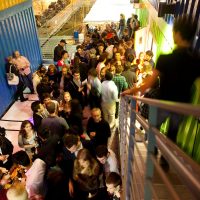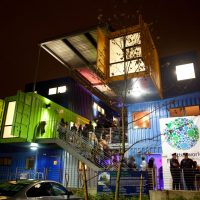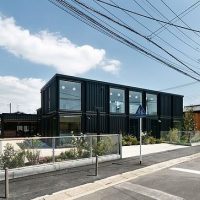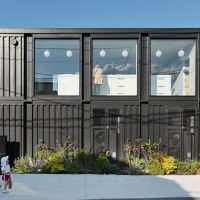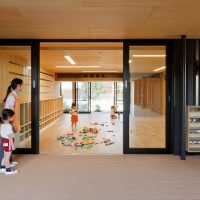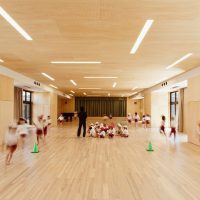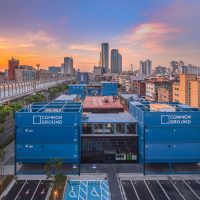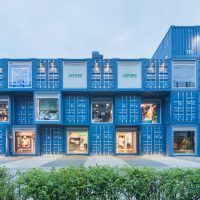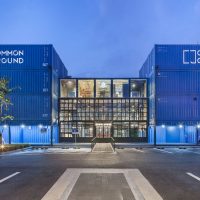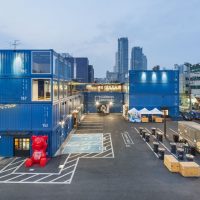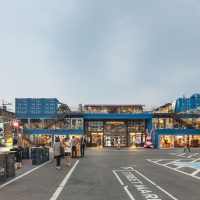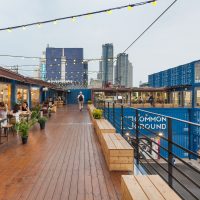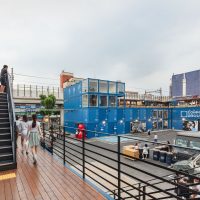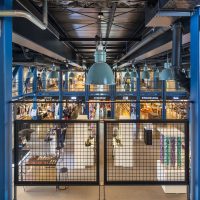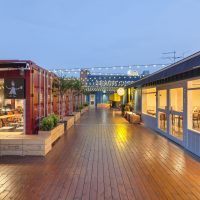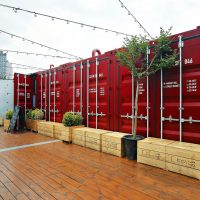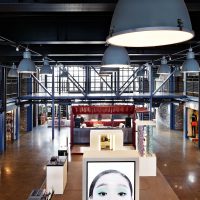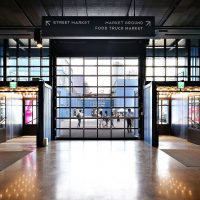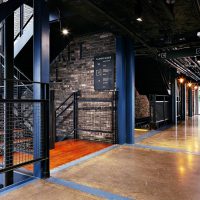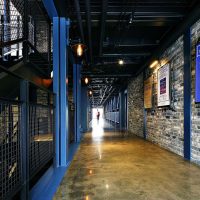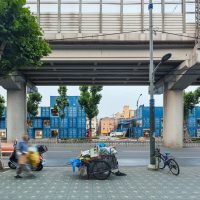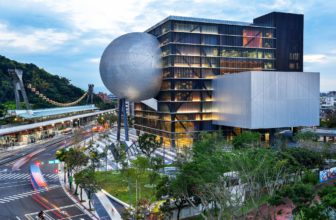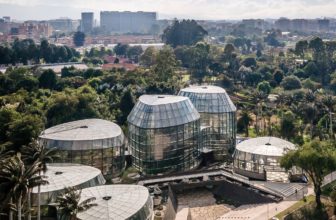With the rising calls for adopting sustainability and eco-friendly design, upcycling shipping containers to be architecture building units has been trending recently. The shipping container is originally used to store and transfer cargo from one point to another, domestically or overseas. So, what happens to all those stacked cargo containers, at the ports, after they have been emptied? Some of these containers are suitable for one-time use, meaning they cannot be reused for shipping again. Also, transporting empty containers back to where they came from would cost loads and energy for no benefit. Upcycling a shipping container is the ultimate solution; no waste and less manufacturing energy—this is the easiest sustainability formula. So, it might be better to keep them and reuse them, if not for shipping, then for a living. Shipping containers are known to be reused as houses – you can check these Amazing Shipping Container Houses! However, various uses are applicable. Keep reading to explore!
Read more:
1. Shipping Container Skyscraper | CRG Architects
2. Starbucks to be the First Shipping Container Store in Asia Pacific
3. Shipping Containers As Housing Solution In Dharavi Slum | Ganti & Associates
Here is a list of 8 applications of Shipping Container Architecture:
1.Bayside Marina Hotel – Yokohama, Japan
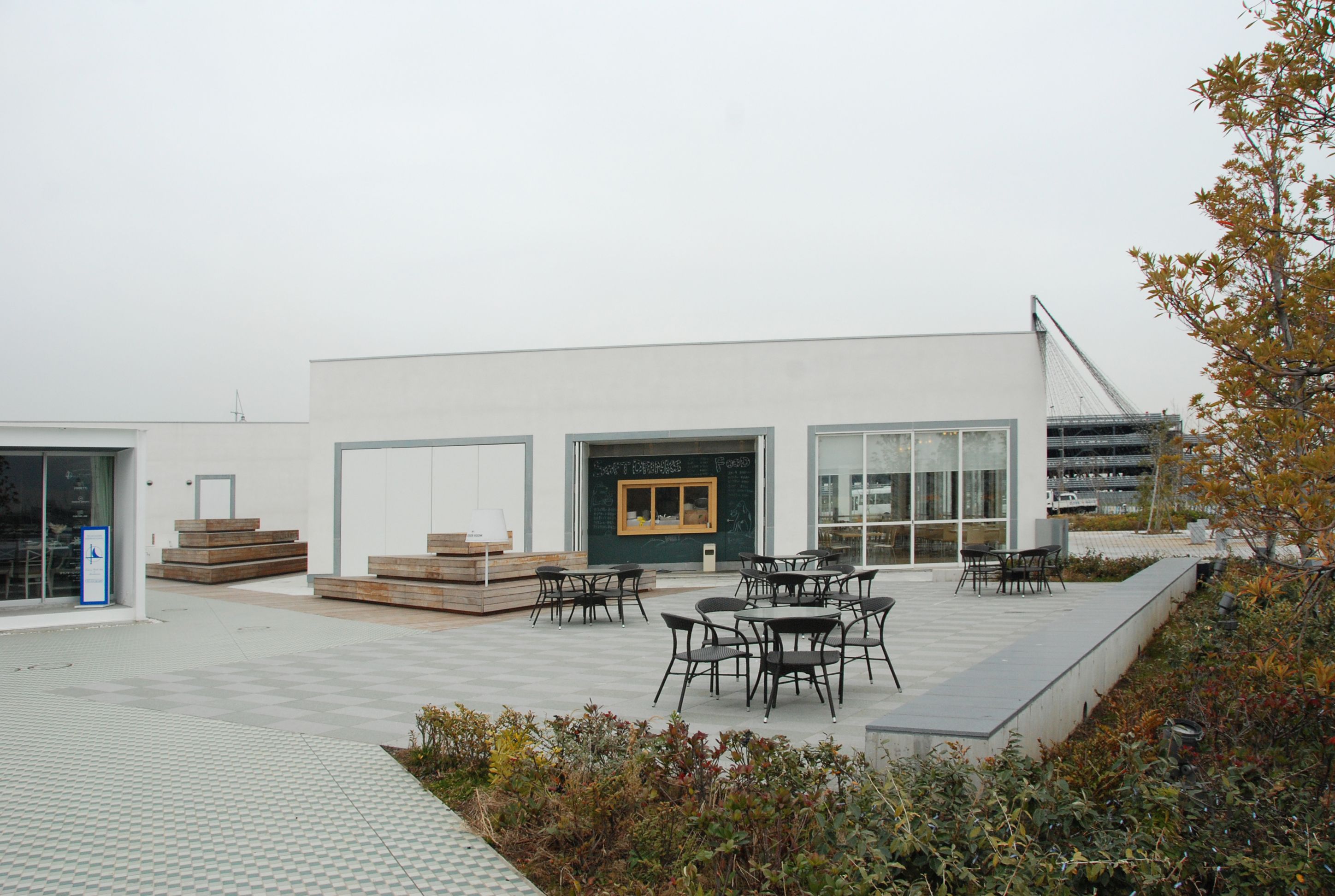
photography by © Teruhiro Kataoka
The unconventional hotel by Yasutaka Yoshimura architects comprises randomly placed cottages built from shipping containers. Each cottage is composed of two vertically stacked containers and enjoys a unique view of Tokyo Bay.
- photography by © Teruhiro Kataoka
- photography by © Teruhiro Kataoka
- photography by © Teruhiro Kataoka
- photography by © Teruhiro Kataoka
- photography by © Teruhiro Kataoka
- photography by © Teruhiro Kataoka
- photography by © Teruhiro Kataoka
- photography by © Teruhiro Kataoka
- photography by © Teruhiro Kataoka
- photography by © Teruhiro Kataoka
- photography by © Teruhiro Kataoka
- photography by © Teruhiro Kataoka
- photography by © Teruhiro Kataoka
- photography by © Teruhiro Kataoka
2.PV14 House – Texas, USA
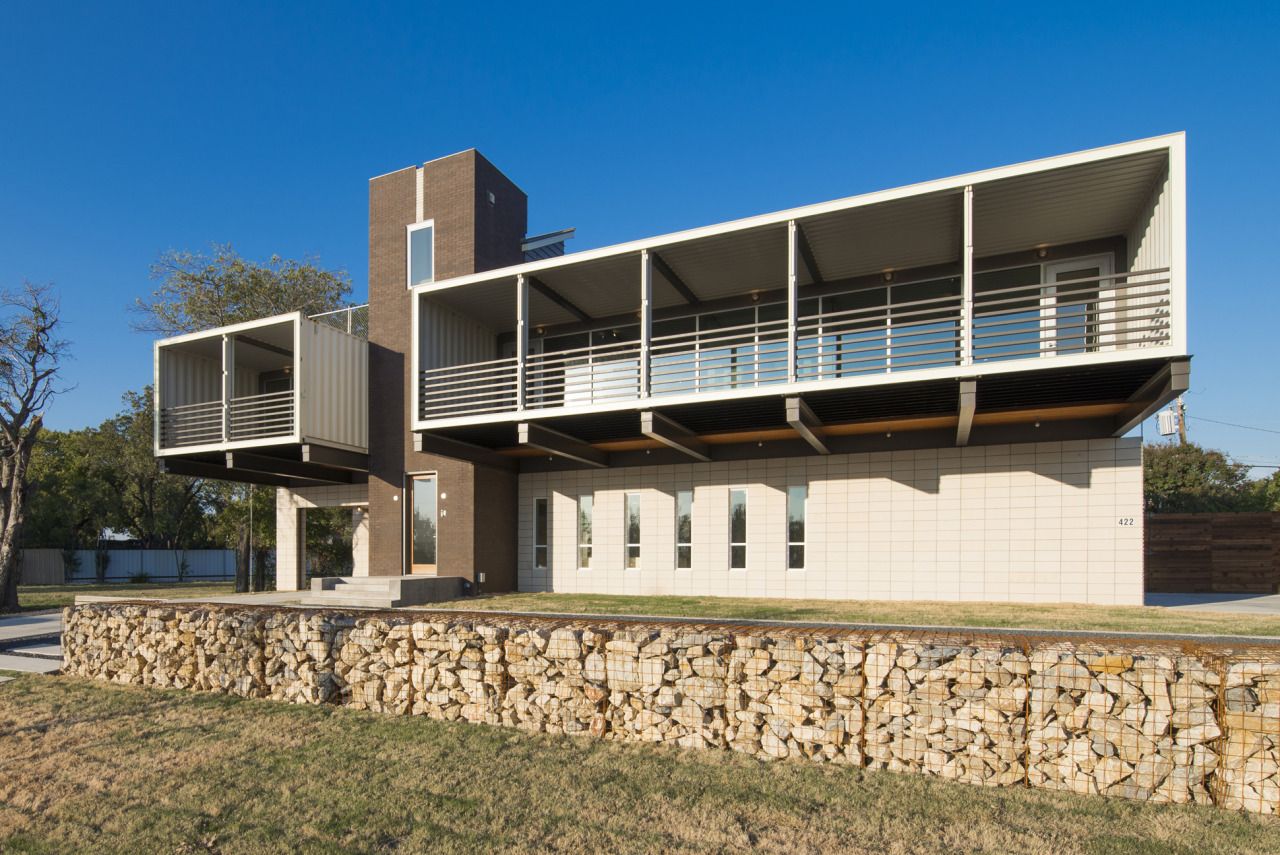
photography by © Wade Griffith
The 344-meter-square house was designed by M Gooden Design. The house features a modern interior and exterior, with overhanging terraces which have an optimized view of White Rock Lake. Its structure system incorporates an exposed steel structure, glass, masonry, and 14 shipping containers.
- photography by © Wade Griffith
- photography by © Wade Griffith
- photography by © Wade Griffith
- photography by © Wade Griffith
- photography by © Wade Griffith
- photography by © Wade Griffith
- photography by © Wade Griffith
- photography by © Wade Griffith
- photography by © Wade Griffith
- photography by © Wade Griffith
- photography by © Wade Griffith
- photography by © Wade Griffith
- photography by © Wade Griffith
- photography by © Wade Griffith
3.Cité A Docks – Le Havre, France
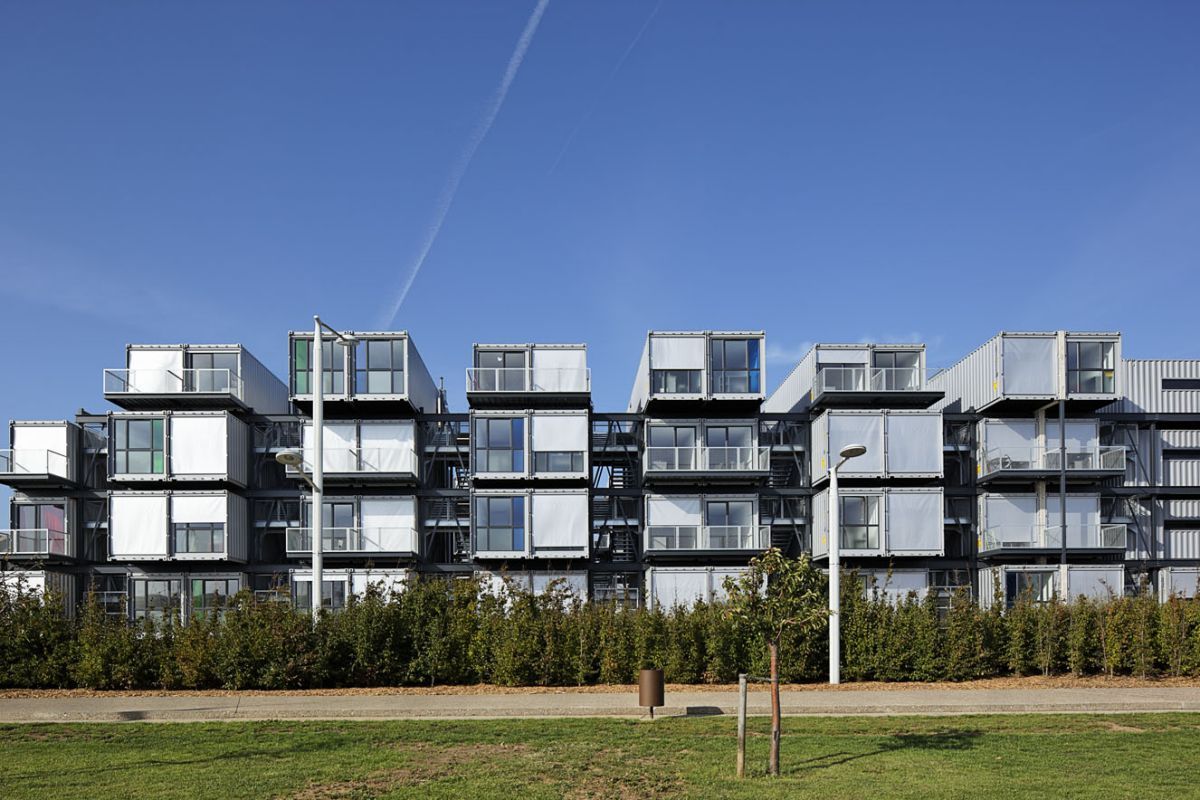
The student housing project, constructed entirely from shipping containers, was designed by Cattani Architects. The 4-story building contains 100 apartments. Each has an area of 24 square meters, including a bathroom and a kitchen.
4.Wahaca Restaurant – London, England
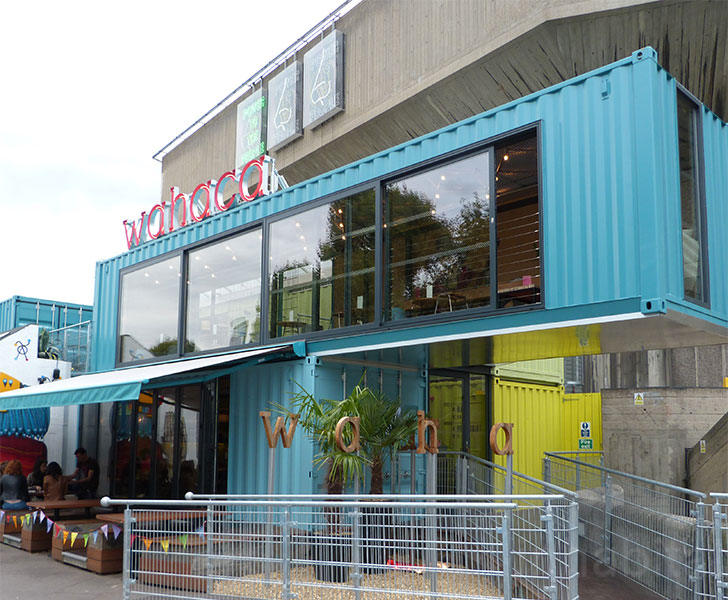
Courtesy of Inhabitat
Wahaca Mexican restaurant in London’s Southbank is designed by Softroom architects. It is built using eight shipping containers, painted in a shade of cyan, and decorated with Latin-themed murals by street artists. Due to the limited height of the containers, the architects could fit the two-floor restaurant in a single-floor space.
5.Dunraven School Sports Hall – London, England
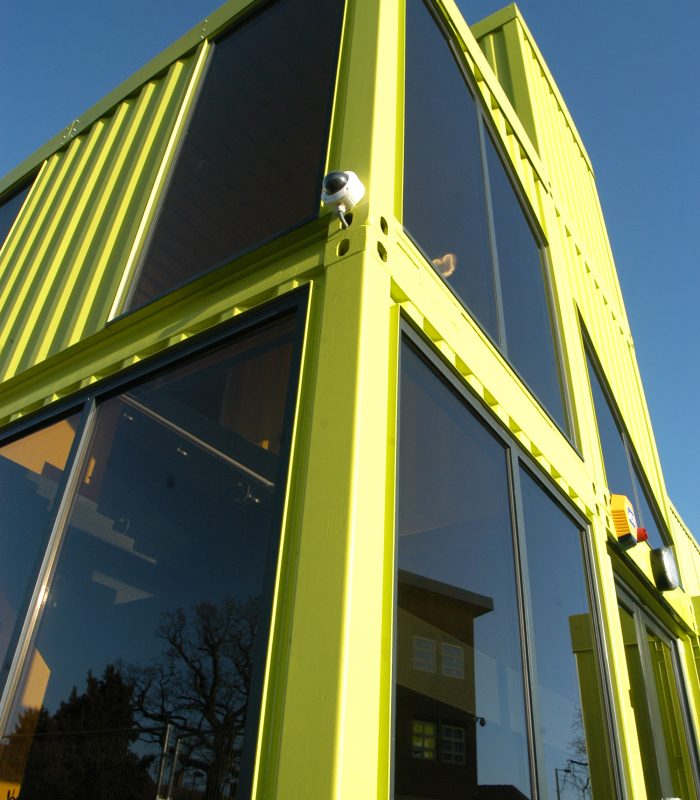
Courtesy of Furness partnership
The 1,225-square-meter sports hall was designed and built in 3 months, and installed in 3 days. The SCABAL-designed hall has three walls built from upcycled shipping containers, stacked on top of each other to give a full-height gym, while the fourth wall is built from translucent polycarbonate. The hall houses four courts, a viewing gallery, changing rooms, and offices.
6.Box Office – Rohde Island, USA
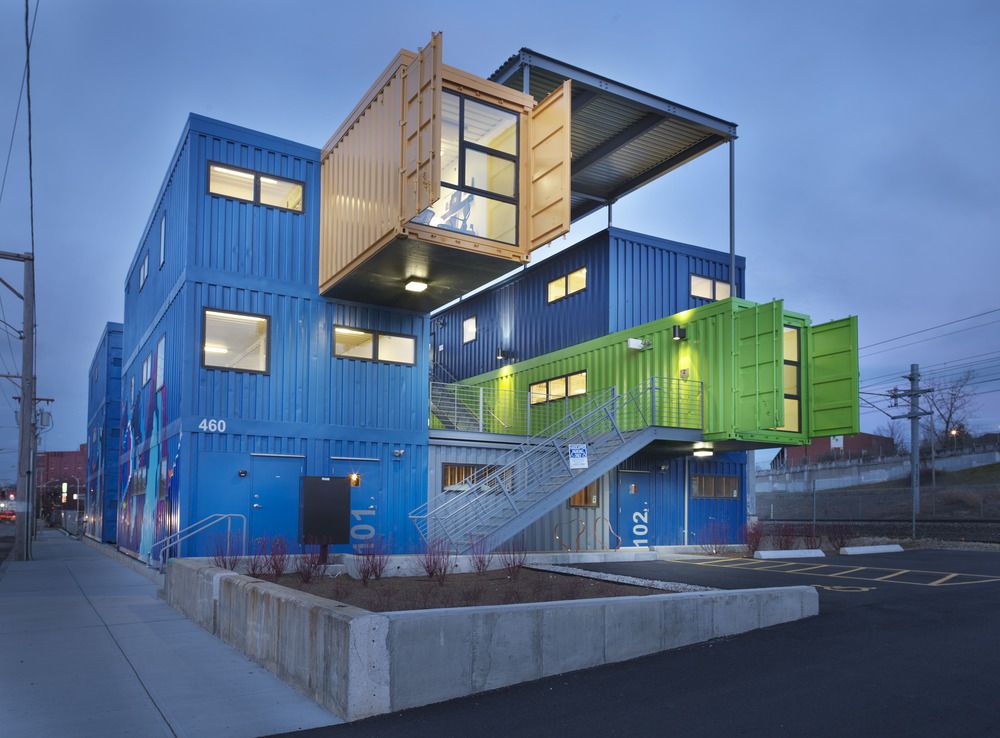
The office building, designed by Distill Studio, is built from 32 shipping containers and includes 12 offices and cantilevered conference rooms. The areas of the offices range between, approximately, 60 square meters and 240 square meters. The building features a colorful upbeat exterior, in addition to high-performance insulation and energy-efficient climate control.
7.Ogura Asahi Kindergarten – Saitama, Japan
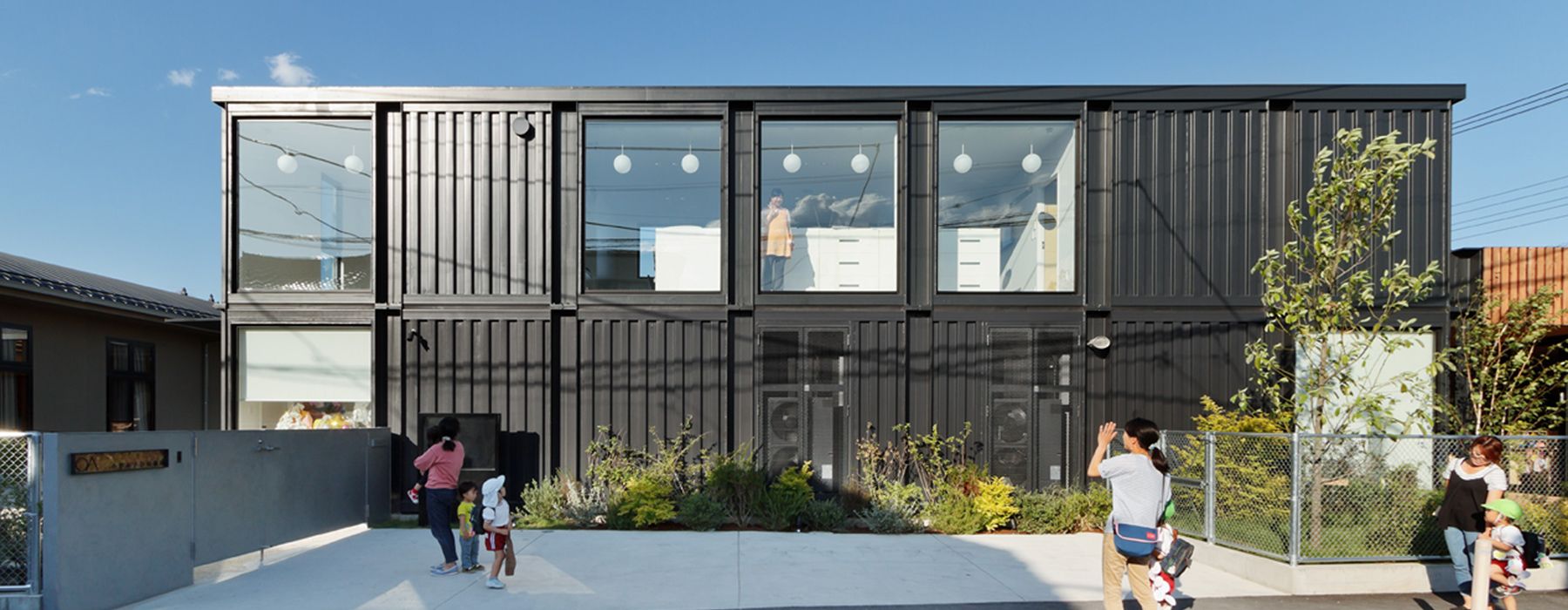
This kindergarten, in Saitama, was renovated by HIBINOSEKKEI + Youji no Shiro using stacked shipping containers that surround a central courtyard. All the classrooms have access to a shaded outdoor terrace that leads to the courtyard. The building, also, contains a 364-meter-square multipurpose hall and offices on the upper floor.
8.Common Ground – Seoul, South Korea
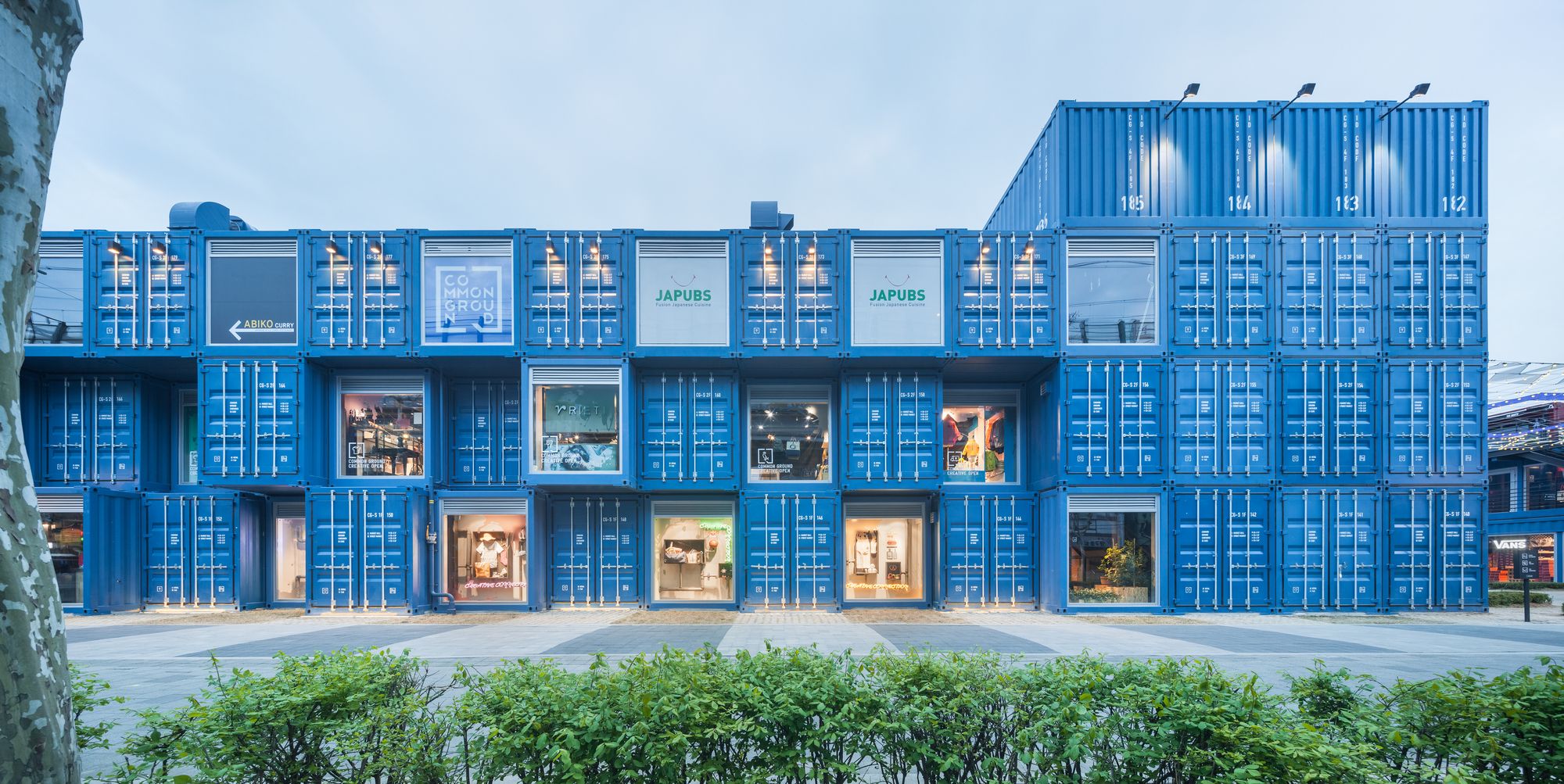
Common Ground is the world’s largest shopping mall made entirely from shipping containers. The 3-story structure was designed by local firm Urbantainer, and it comprises 200 large modular containers painted in bright blue. It has a total area of 5,300m2 which includes 70 stores, 20 restaurants, and a rooftop terrace.




